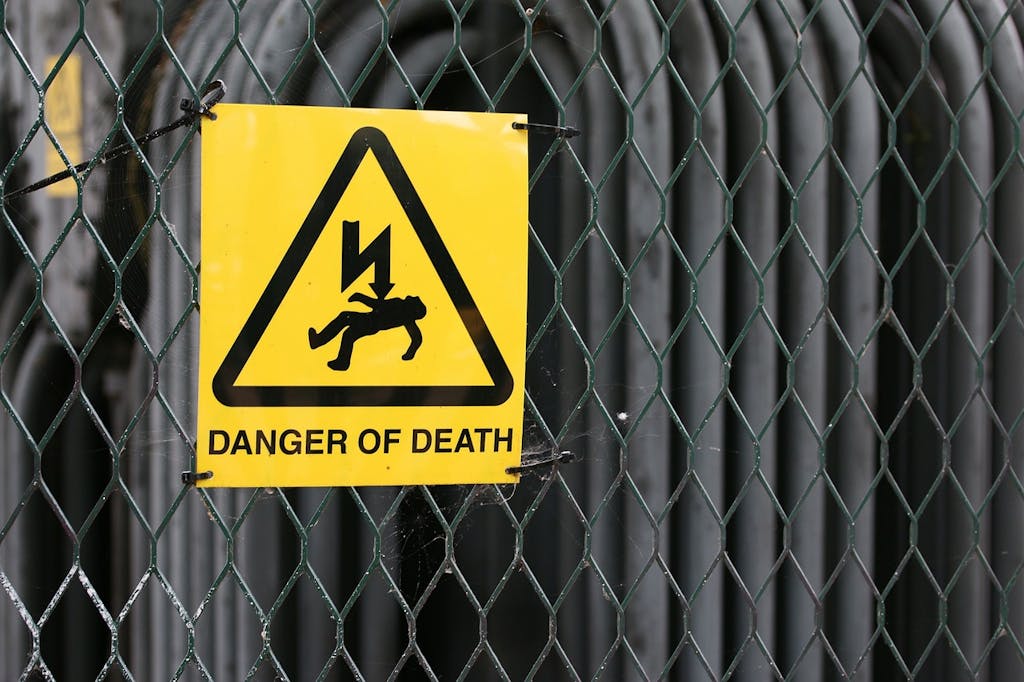Electrical equipment is so ubiquitous in our day-to-day lives that it’s easy to forget how dangerous it can be when it’s improperly used, handled, or maintained. Electricity is part of the Occupational Safety and Health Administration’s “Fatal Four,” representing the third leading cause of workplace annual workplace deaths. The good news is that most people don’t routinely have to deal with the most common hazards of electricity, but it is important to be aware and take precautions, such as proper grounding and the use of electrical tools, to reduce the risk of injury.
Most, but not all.
Professionals working in the construction, utility, and manufacturing sectors face far greater risks. They must routinely work around electrical lines, exposed wiring, and high-voltage equipment. For these employees, a thorough understanding of electrical hazards can be a matter of life or death.
- What Are Electrical Hazards?
- What Is Electrical Safety?
- Why is Electrical Safety Important?
- How to Prevent Electrical Hazards in the Workplace
- Make Electrical Safety Training Part of Onboarding
- Lock Down Live Electrical Currents
- Maintain Cords and Outlets
- Ensure Everyone Has Access to the Right Protective Equipment
- Define (And Follow) Safety Policies and Practices
- Gain a Handle on Electric Safety With Mobile Inspection Software
What Are Electrical Hazards?
According to an OSHA training document, an electrical hazard is anything that has the potential to directly expose an employee to unshielded electric current, resulting in an electric shock or burn. Even voltages as low as 3 milliamperes can cause indirect or secondary injuries; the higher the voltage, the greater the chance of a fatality. Electrical hazards, which are associated with electrical systems, also have the potential to cause fires and explosions, as well as short circuits and injury from exposure to live parts.
The most common electrical hazards include:
- Overhead power lines
- Damaged or faulty equipment
- Exposed electrical components
- Inadequate wiring
- Overloaded circuits
- Damaged or improper insulation
- Inadequate grounding
- Operating equipment in wet conditions

What Is Electrical Safety?
Electrical safety is a catch-all term for any precaution that mitigates electrical hazards. Typically, electrical safety practices are defined and enforced by a government or industry regulator such as OSHA. Employers are expected to adhere to electrical safety regulations and train their employees accordingly.
Why is Electrical Safety Important?
An employee who ignores electrical safety puts themself at risk of any of the following injuries:
- Broken bones or fractures
- Muscle sprains and tears
- First to third degree burns
- Cardiac arrest
- Organ damage from internal burns
- Loss of function or sensation
- Permanent scarring
- Death
Additionally, if it’s determined that an employer did not follow proper electrical safety practices, it may be the target of regulatory penalties, lawsuits, or even criminal prosecution.

How to Prevent Electrical Hazards in the Workplace
The nature of electrical hazards varies by industry, as do their requisite safety precautions. With that said, there are certain general best practices every workplace can — and should — follow.
Make Electrical Safety Training Part of Onboarding
A little knowledge goes a long way. If your employees must deal with electrical hazards as part of their day-to-day, proper safety training should be a cornerstone of your onboarding process. It’s imperative that everyone is adequately trained, from workers to project managers and site supervisors.
In broad strokes, this training should focus on the following:
- How electricity works
- General electrical safety measures
- Job and site specific safety measures
- Safety processes and procedures
- Equipment-specific electrocution prevention
- Identification and mitigation of electrical hazards
Lock Down Live Electrical Currents
To protect your employees from electrical hazards, always ensure that anyone who’s not both properly trained and wearing the right personal protective equipment (PPE) stays far away from live currents, especially if they’re greater than 50 volts. This is best accomplished through the use of physical barriers.
First and foremost, always keep cabinet doors on electrical panels tightly secured, and ensure there are no openings with exposed wiring. Depending on the nature of an electrical hazard, you may also want to use barriers, shields, or insulation parts for added protection when performing electrical maintenance or repairs. Secure any exposed parts and maintain proper guarding mechanisms and proper signage at all times alerting people to the nature of a potential hazard, especially when performing electrical work. Safety barriers and signs must also be installed to warn nearby non-electrical workers of the hazards present in the area.
The goal is to keep the area clear of unqualified staff until the hazard can be safely contained.
Maintain Cords and Outlets
Although most people don’t have to deal with life-threatening electrical hazards in their workplace, that doesn’t mean they aren’t at risk. Improperly-maintained electrical cords and appliances can cause electric shocks and even cause a fire. For that reason, make sure everyone knows how to properly maintain their electrical equipment.
That includes:
- Unplug cords by pulling on the head rather than the cable
- Avoid subjecting electrical cords to physical force such as stretching, pressing, or crimping
- Do not fasten cords with nails, staples, or anything similar
- Do not hang or carry electrical equipment by its cord
- Inspect electrical cords and outlets for damage or defects prior to use
- Do not attempt to plug in or unplug an electrical device with wet hands
Ensure Everyone Has Access to the Right Protective Equipment
PPE is essential for anyone who routinely works with or around electrical hazards such as wiring or power lines. Where electrical hazards are concerned, protective equipment typically comes in two flavors. Electrical PPE is the most common, and includes:
- Rubber insulating gloves with leather arm guards
- Rubber insulating sleeves
- Flame resistant, insulated clothing
- Insulated hoods
- Hard Hats
- Safety glasses
- Rubber insulating safety shoes and overshoes

There’s also Insulating Protective Equipment (IPE), commonly used by contractors and engineers working on power lines. IPE includes, but is not limited to:
- Insulating line hose
- Insulating fiberglass or resin barriers
- Hotsticks, switchsticks, or shotgun sticks
- Insulating blankets or hoods
- Fiberglass/plastic covers or line hoods
Define (And Follow) Safety Policies and Practices
Safety policies exist for a reason. To keep your employees safe, establish safety rules that encompass the following areas:
- Material Safety. Define the conductive and explosive tools and materials in your workplace, and make it absolutely clear that these are to be kept away from electrical parts, components, and hazards.
- Lockout/Tagout. The steps required to disable and de-energize a machine before maintenance can be safely performed.
- Emergency Procedures. This includes how to deal with an electrical hazard as well as first aid.
- Required Qualifications. What knowledge and training is required in order for an employee to safely manage an electrical hazard?
- Equipment Guidelines. Includes both electrical PPE and IPE.
- General Guidance. This could include the importance of situational awareness when performing overhead maintenance, electrocution prevention, and the importance of always treating electrical components as though they are active.
Gain a Handle on Electric Safety With Mobile Inspection Software
We spend so much time around electricity, it’s easy to forget how dangerous it can be. To help your employees avoid a potentially tragic accident, it’s best to be proactive and build a safety compliance checklist. That’s where we come in.
We enable a data-focused approach that gives you company-wide visibility into employee safety, allowing you to track and monitor every hazard, electrical or otherwise. You can also track corrective actions, schedule follow-ups, and empower everyone in your workplace to take a more active role in safety and maintaining a safe working environment. Start your 14-day free trial today to learn more.
last modified:09.17.24
Recent Posts

Top 5 Food Processing Industry Trends That Matter in 2025

Keeping Up With Compliance Trends 2025

OSHA Ladder Safety 101: How to Meet OSHA Standards and Keep Your Workers Safe

Car Wash Safety: Regulations & Best Practices You Need to Know

Fall Hazards At Work: How To Keep Your Employees Safe

The High Price of Neglect: OSHA Violations and Penalties

Slips, Trips and Falls in the Workplace: Best Practices

HSEQ Audit: The Complete Guide

Improve Safety: Inspection Management Software Benefits

Promoting Safe and Productive Working Environments: Occupational Health & Safety Tips to Consider
